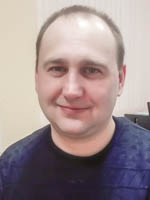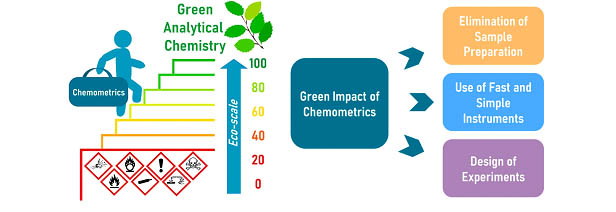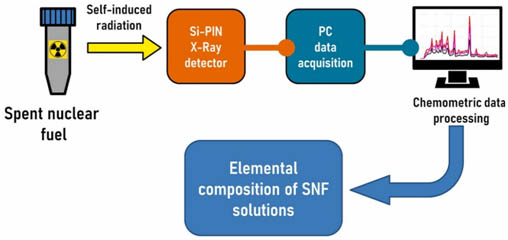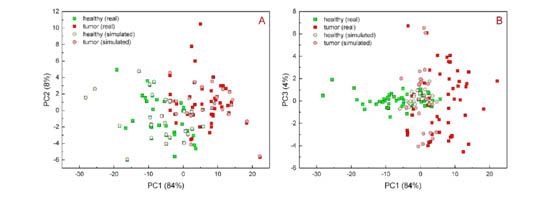Department of Analytical Chemistry, Laboratory 3124
Laboratory of applied chemometrics
Research interests
 |
Head of the laboratory Kirsanov DmitryProfessor, room 3142 ORCID 0000-0002-5667-6910 This email address is being protected from spambots. You need JavaScript enabled to view it. |
 |
Panchuk VitalyPhD in physics and mathematics, associate Professor room 3124 ORCID 0000-0001-6169-2694 This email address is being protected from spambots. You need JavaScript enabled to view it. |
 |
Ekaterina BoichenkoPhD, room 3142 ORCID 0000-0002-7809-5033 This email address is being protected from spambots. You need JavaScript enabled to view it. |
 |
Saveliev MikhailBachelor student Engineerat Saint Petersburg State University ORCID 0009-0005-4899-2656 |
 |
Vladislav DeevPhD student ORCID0000-0001-6046-7719 |
|
|
Ekaterina YuskinaPhD student ORCID 0009-0004-5108-4248 This email address is being protected from spambots. You need JavaScript enabled to view it. |
 |
Anna GaponovaBachelor student This email address is being protected from spambots. You need JavaScript enabled to view it. |
 |
Dmitry Stanislavchuk-AbovskyBachelor student This email address is being protected from spambots. You need JavaScript enabled to view it. |
 |
Nikolay SmolyanovLaboratory Assistant at Saint Petersburg State University |
Alumni
2024
- Ekaterina Yuskina-Master's thesis
- Mikhail Saveliev- Master's thesis
- ZaharsSelivanovs- Master's thesis
- Aleksey Tretiakov- Master's thesis
2023
- Regina Belugina- PhD thesis
- Darina Kazanina-Master's thesis
2022
- Ekaterina Boichenko - PhD thesis
- Yingchao Ren - Master's thesis
- NadanKravić - Master's thesis
- Ekaterina Yuskina- Bachelor's thesis
- Mikhail Saveliev- Bachelor's thesis
- ZaharsSelivanovs- Bachelor's thesis
- Kirill Rukosuev - Bachelor's thesis
2020
- Ekaterina Martynko - Master's thesis
2018
- JuliaAshina - PhD thesis
- Ding Xi - Master's thesis
2017
- Olesya Zadorozhnaya - PhD thesis
- VeneraGilemkhanova- Master's thesis
- Daria Borodina - Specialist's thesis
2016
- Maria Khaydukova - PhD thesis
- Victor Semenov - Master's thesis
2014
- IrinaYaroshenko - PhD thesis
- Ekaterina Boichenko (Oleneva) - Bachelor's thesis
Main research areas
- Application of machine learning in chemistry (chemometrics)
- Spectroscopic, chromatographic and sensor data processing
- Electrochemical and optical multisensor systems
- Analytical applications for real world problems
Examples of the research projects
- Prostate cancer diagnosis system based on potentiometric multisensor system
- Potentiometric multisensorsystems for analysis of spent nuclear fuel in at-line mode
- Getting rid of reference electrode in potentiometric multisensor measurements
- Nonlinear dimensionality reduction methods for potentiometric multisensor systems data analysis
- In vivo and in vitro application of near-infrared fiber optic probe for Ehrlich carcinoma distinction
- Qualitative analysis of urinary stones using near-infrared spectroscopy and chemometric
- Application of two-dimensional convolutional neural networks in spectral processing
- Quantification of elements in spent nuclear fuel using intrinsic radioactivity for sample excitation and chemometric data processing
- Possibility of universal chemometric calibration in x-ray fluorescence spectrometry
- Study of analytical potential of a high-frequency inductance coil sensor
Current funding
- Grant #23-73-01139 « Combination of spectral analysis and machine learning methods for minimally invasive diagnosis and monitoring of treatmentof the urogenital system» (Boichenko E.S.)
- Grant #23-23-00114 «Study of analytical potential of a high-frequency inductor coil detector» (Kirsanov D.)
- Grant #23-23-00108 «Development of chemometric approaches in X-ray fluorescence analysis» (Panchuk V.)
Publications
Selected publications
Math is greener than chemistry: Assessing green chemistry impact of chemometrics

Q1 Mikhail Saveliev, Vitaly Panchuk, Dmitry Kirsanov
Chemometric modeling is an important part of the modern analytical chemistry allowing reliable qualitative and quantitative analysis in numerous practically important tasks. Besides significant simplification and cost reduction of analytical procedures achieved through the application of chemometrics, there is a considerable green impact from the use of these methods. However, not so many reports evaluate the particular impact of the chemometric procedures on making the analysis green. Here we evaluate this impact using the popular Eco-Scale greenness score. A combination of chemometric methods with inexpensive spectroscopic, electroanalytical and other techniques eliminates the need in applying dangerous and environmentally unfriendly reagents and procedures. Based on the literature data from several representative case studies we have demonstrated that the EcoScale score in addressing particular analytical tasks can be improved up to 40 points through the use of chemometric-based methods.
TrAC - Trends in Analytical Chemistry.2024, 172, paper#117556doi.org/ 10.1016/j.trac.2024.117556
Quantification of elements in spent nuclear fuel using intrinsic radioactivity for sample excitation and chemometric data processing

Q1Vitaly Panchuk, Yuriy Petrov, Valentin Semenov, Dmitry Kirsanov
Quantitative analysis of spent nuclear fuel (SNF) is a very challenging task. High radioactivity, complex chemical composition and personnel safety requirements severely limit the number of analytical tools suitable for this problem. There is an urgent need for the methods that would provide for remote on-line quantification of elements in spent nuclear fuel and its reprocessing technological solutions. Here we propose a novel approach based on the registration of X-ray fluorescence radiation from SNF samples induced by fission products radioactivity. In this case the X-ray excitation conditions will obviously vary from sample to sample; moreover the resulting spectra will be a complex superposition of numerous signals from soft gamma emitters and X-ray fluorescence of various nature. These complex spectra can be effectively treated with chemometric data processing for quantification of particular elements. We have demonstrated the validity of this approach for direct analysis of U, Zr and Mo in SNF raffinate.
Analytica Chimica Acta. 2023, 1239, paper# 340694.doi.org/10.1016/j.aca.2022.340694
Validation of classification models in cancer studies using simulated spectral data – A “sandbox” concept

Q2Ekaterina Boichenko, Andrey Panchenko, Margarita Tyndyk, Mikhail Maydin, Stepan Kruglov, Viacheslav Artyushenko, Dmitry Kirsanov
Spectroscopy has become a popular method in research devoted to cancer diagnostics, therapy, and surgery –anywhere we need to detect tumor cells surrounded by non-cancerous ones. Usually, chemometrics methods are applied to classify cancerous and non-cancerous sites, so proper validation of classification models is required to ensure the reliability of the obtained results. In this study, we suggest using real data for simulation of spectral sets with varying characteristics (size, distribution of classes) – an analog of “sandbox” used in software development – and to validate the models in different conditions. Near-infrared spectra (939–1796 nm) measured from breast tumors and healthy tissues of laboratory mice (152 spectra) were used for simulation of spectral data sets of different sizes (50, 100, 150 spectra). We proposed a simple simulation method based on a singular value decomposition of the real spectral dataset and rearrangement of the calculated residuals. Several algorithms of training and test set selection have been applied to the simulated data (Kennard-Stone, DUPLEX, random, Monte-Carlo cross-validation), and corresponding Support Vector Machines classification models have been trained, optimized, and validated by using a series of test sets with varying “healthy: tumor” classes distribution (1:1,3:1,1:3) and size (10%, 30%, and 50% of the training data set). Performance of the classification models, expressed in values of accuracy, sensitivity, and selectivity, has been compared, and a validation strategy has been proposed.
Chemometrics and Intelligent Laboratory Systems.2022, 225, 104564 doi.org/10.1016/j.chemolab.2022.104564
A Simple Contactless High-Frequency Electromagnetic Sensor: Proof of Concept

Q1Ekaterina Yuskina, Nikodim Makarov, Maria Khaydukova, Tatiana Filatenkova, Olga Shamova, Valentin Semenov, Vitaly Panchuk, Dmitry Kirsanov
We report on the development of a very simple and inexpensive sensor device based on an inductance coil connected to a high-frequency electric field generator. The working principle of this sensor is as follows: liquid sample in a plastic tube is placed inside the inductance coil as its core and this core changes the properties of high-frequency electric current passing through the coil; these changes depend on sample conductivity, dielectric constant, magnetic properties, and capacitance. The electric signal registered after the coil represents a kind of a spectrum that can be effectively treated with chemometric tools. Our studies have shown that such a sensor can be used to distinguish between substances with different physical and chemical properties; different concentrations of ions in aqueous solutions with a linear response in a broad concentration range from 10–3 M to 10–1 M; can quantify the fat content in milk and cream samples with about 2% accuracy; and can distinguish between bacterial cultures and cell line cultures. The measurements are very fast and contactless, and the results show good promise for developing a number of applications of this sensor system.
Anal. Chem. 2022, 94, 35, 11978–11982doi.org/10.1021/acs.analchem.2c02067
2024
- Saveliev, M., Panchuk, V., Kirsanov, D. Math is greener than chemistry: Assessing green chemistry impact of chemometrics (2024) TrAC - Trends in Analytical Chemistry, 172, paper#117556. DOI: 10.1016/j.trac.2024.117556
- Deev V., Panchuk V., Boichenko E., &Kirsanov D. (2024). Spectrum is a picture: Feasibility study of two-dimensional convolutional neural networks in spectral processing. Microchemical Journal, 205, 111329.DOI: 10.1016/j.microc.2024.111329
- Semenov, V., Grigoriev, M., Kirsanov, D., Panchuk, V. When one equals two: Chemometrics turns Mössbauer spectrometer into X-ray fluorescence one (2024) Spectrochimica Acta - Part B Atomic Spectroscopy, 213, paper#106878. DOI: 10.1016/j.sab.2024.106878
- Iurgenson, N., Wang, X., Kong, L., Sun, X., Legin, A., Wang, P., Wan, H., Kirsanov, D. Feasibility study of multisensor systems for the assessment of water pollution index induced by heavy metal contamination (2024) Microchemical Journal, 197, paper#109762. DOI: 10.1016/j.microc.2023.109762
- Selivanovs, Z., Savosina, J., Agafonova-Moroz, M., Kirsanov, D. Nonlinear dimensionality reduction methods for potentiometric multisensor systems data analysis (2024) Electroanalysis, 36 (1), paper# e202300220. DOI: 10.1002/elan.202300220
- Yuskina, E.,Boichenko, E., Makarov, N., Panchuk, V., Kirsanov, D. Inductance coil high-frequency contactless chemical sensor: Systematic study of its cationic sensitivity (2024) Measurement,232, paper#114716. DOI: 10.1016/j.measurement.2024.114716
- Yuskina, E., Panchuk,V., Kirsanov, D.O.Evolution of Contactless Conductometry Methods (2024) Journal of Analytical Chemistry, 79(6), 654–662. DOI: 10.1134/S1061934824700023
- Meshina, K., Tkachenko, D., Kochnev, N., Lunkov, S., Panchuk, V., Kirsanov, Bobrysheva, N., Osmolowsky, M., Voznesenskiy, M., Osmolovskaya O.Understanding the role of ZnO nanosheet surface in photocatalytic dye degradation: The key to effective wastewater treatment (2024) Ceramics International, 50 (19), 35103-35114. DOI:10.1016/j.ceramint.2024.06.317
- Vladimirova, N., Bochko, T., Shishov, A., Kirsanov, D. Predicting the properties of deep eutectic solvents based on choline chloride and carboxylic acids and their mixtures with water using QSPR approach (2024) Colloids and Surfaces A: Physicochemical and Engineering Aspects, 692, paper#133961. DOI: 10.1016/j.colsurfa.2024.133961
- Rashitova, K., Kirsanov, D., Voznesenskiy, M., Osmolovskaya, O. PVC plasticized membranes modified with Fe3O4 nanoparticles for potentiometric sensing of sulfate (2024) Surfaces and Interfaces, 48, paper#104326. DOI: 10.1016/j.surfin.2024.104326
- Braunger, M.L., Neto, M.P., Kirsanov, D., Fier, I., Amaral, L.R., Shimizu, F.M., Correa, D.S., Paulovich, F.V., Legin, A., Oliveira, O.N., Riul, A.Analysis of Macronutrients in Soil Using Impedimetric Multisensor Arrays (2024) ACS Omega,9(31),33949–33958. DOI: 10.1021/acsomega.4c04452
2023
- Boichenko, E., Kirsanov, D. Optical spectroscopy and chemometrics in intraoperative tumor margin assessment (2023) TrAC - Trends in Analytical Chemistry, 160, paper#116955. DOI: 10.1016/j.trac.2023.116955
- Boichenko, E., Paronnikov, M., Kirsanov, D. (2023) Pilot Study on the Qualitative Analysis of Urinary Stones Using Near-Infrared Spectroscopy and Chemometrics. Eng. Proc., 48, 64. DOI: 10.3390/CSAC2023-15162
- Surkova, A., Bogomolov, A., Paderina, A., Khistiaeva, V., Boichenko, E., Grachova, E., Kirsanov, D. (2023) Milk Analysis using a New Optical Multisensor System Based on Lanthanide(III) Complexes. Eng. Proc., 48, 28. DOI: 10.3390/CSAC2023-14923
- Yuskina, E., Makarov, N.,Khaydukova, M., Semenov, V.,Panchuk, V.,Kirsanov, D. Sensor Device for Contactless Chemical Analysis Based on High-Frequency Inductance Coil (2023) Eng. Proc., 48, 42. DOI: 10.3390/CSAC2023-14886
- Belugina, R., Puchkova, E., Yuskina, E., Khalatov, A., Podberezskiy, V., Savinov, S., Legin, A., Panchuk, V., Kirsanov, D. Getting rid of reference electrode in potentiometric multisensor measurements (2023) Sensors and Actuators B: Chemical, 393, paper# 134269. DOI: 10.1016/j.snb.2023.134269
- Konopkina, E.A., Pozdeev, A.S., Kalle, P., Kirsanov, D.O., Smol'yanov, N.A., Kirsanova, A.A., Kalmykov, S.N., Petrov, V.G., Borisova, N.E., Matveev, P.I. Sensing and extraction of hazardous metals by di-phosphonates of heterocycles: a combined experimental and theoretical study (2023) Dalton Transactions, 52 (36), pp. 12934-12947. DOI: 10.1039/d3dt01534c
- Selivanovs, Z., Panchuk, V., Kirsanov, D. On the Possibility of Universal Chemometric Calibration in X-ray Fluorescence Spectrometry: Case Study with Ore and Steel Samples (2023) Applied Sciences (Switzerland), 13 (9), paper#5415. DOI: 10.3390/app13095415
- Kochnev, N.D., Tkachenko, D.S., Kirsanov, D.O., Bobrysheva, N.P., Osmolowsky, M.G., Voznesenskiy, M.A., Osmolovskaya, O.M. Regulation and prediction of defect-related properties in ZnO nanosheets: synthesis, morphological and structural parameters, DFT study and QSPR modeling (2023) Applied Surface Science, 621, paper#156828. DOI: 10.1016/j.apsusc.2023.156828
- Maltsev, A.S., Umarova, N.N., Pashkova, G.V., Mukhamedova, M.M., Shergin, D.L., Panchuk, V.V., Kirsanov, D.O., Demonterova, E.I. Combination of Total-Reflection X-Ray Fluorescence Method and Chemometric Techniques for Provenance Study of Archaeological Ceramics (2023) Molecules, 28 (3), paper# 1099. DOI: 10.3390/molecules28031099
- Savosina, J., Agafonova-Moroz, Naumov, A., Nikolaev, A., Lumpov, A., M., Babain, V., Legin, A., Olivieri, A., Parastar, H., Kirsanov, D. Simultaneous Quantification of Zr, Mo, U, Np and Pu in Technological Solutions of Spent Nuclear Fuel Reprocessing with a Potentiometric Multisensor System (2023) Sensors and Actuators: B. Chemical, DOI: 10.1016/j.snb.2023.133315
- Panchuk, V., Petrov, Y., Semenov, V., Kirsanov, D. Quantification of elements in spent nuclear fuel using intrinsic radioactivity for sample excitation and chemometric data processing (2023) Analytica Chimica Acta, 1239, paper# 340694. DOI: 10.1016/j.aca.2022.340694
2022
- Boichenko, E., Panchenko, A., Tyndyk, M., Maydin, M., Kruglov, S., Artyushenko, V., &Kirsanov, D. (2022). Validation of classification models in cancer studies using simulated spectral data–A “sandbox” concept. Chemometrics and Intelligent Laboratory Systems, 225, 104564. DOI: 10.1016/j.chemolab.2022.104564
- Pashkova, G.V., Zhilicheva, A.N., Chubarov, V.M., Maltsev, A.S., Ukhova, N.N., Pellinen, V.A., Sokolnikova, J.V., Kirsanov, D.O., Panchuk, V.V., Marfin, A.E. Improvement of suspension-assisted total reflection X-ray fluorescence analysis of ores using wet grinding and empirical calibrations (2022) Spectrochimica Acta - Part B Atomic Spectroscopy, 198, paper#106549. DOI: 10.1016/j.sab.2022.106549
- Vladimirova, N., Puchkova, E., Dar’in, D., Turanov, A., Babain, V., Kirsanov, D. Predicting the Potentiometric Sensitivity of Membrane Sensors Based on Modified Diphenylphosphoryl Acetamide Ionophores with QSPR Modeling (2022) Membranes, 12 (10), paper# 953. DOI: 10.3390/membranes12100953
- Dehabadi, M., Yemisci, E., Kursunlu, A.N., Kirsanov, D. Novel Pillar[5]arenes Show High Cross-Sensitivity in PVC-Plasticized Membrane Potentiometric Sensors (2022) Chemosensors, 10 (10), paper# 420. DOI: 10.3390/chemosensors10100420
- Alyapyshev, M., Babain, V., Kirsanov, D. Isolation and Purification of Actinides Using N,O-Hybrid Donor Ligands for Closing the Nuclear Fuel Cycle (2022) Energies, 15 (19), paper# 7380. DOI: 10.3390/en15197380
- Yuskina, E., Makarov, N., Khaydukova, M., Filatenkova, T., Shamova, O., Semenov, V., Panchuk, V., Kirsanov, D. A Simple Contactless High-Frequency Electromagnetic Sensor: Proof of Concept (2022) Analytical Chemistry, 94 (35), pp. 11978-11982. DOI: 10.1021/acs.analchem.2c02067
- Wang, X., Lin, W., Chen, C., Kong, L., Huang, Z., Kirsanov, D., Legin, A., Wan, H., Wang, P. Neural networks based fluorescence and electrochemistry dual-modal sensor for sensitive and precise detection of cadmium and lead simultaneously (2022) Sensors and Actuators B: Chemical, 366, paper# 131922. DOI: 10.1016/j.snb.2022.131922
- Belugina, R., Senchikhina, A., Volkov, S., Fedorov, A., Legin, A., Kirsanov, D. Quantification of phosphatides in sunflower oils using a potentiometric e-tongue (2022) Analytical Methods, 14 (32), pp. 3064-3070. DOI: 10.1039/d2ay00736c
- Surkova, A., Bogomolov, A., Paderina, A., Khistiaeva, V., Boichenko, E., Grachova, E., Kirsanov, D. Optical Multisensor System Based on Lanthanide(III) Complexes as Near-Infrared Light Sources for Analysis of Milk (2022) Chemosensors, 10 (7), paper# 288. DOI: 10.3390/chemosensors10070288
- Aidene, S., Khaydukova, M., Savinov, S., Semenov, V., Kirsanov, D., Panchuk, V. Partial least squares assisted influence coefficients concept improves accuracy in X-ray fluorescence analysis (2022) Spectrochimica Acta - Part B Atomic Spectroscopy, 193, paper# 106452. DOI: 10.1016/j.sab.2022.106452
- Dehabadi, M., Saveliev, M., Legin, A., Yaghmaei, S., Babain, V., Kirsanov, D. Using commercial calcium ionophores to make lanthanide sensors (2022) Journal of Radioanalytical and Nuclear Chemistry, 331 (4), pp. 1751-1758. DOI: 10.1007/s10967-022-08220-5
- Jendrlin, M., Radu, A., Zholobenko, V., Kirsanov, D. Performance modelling of zeolite-based potentiometric sensors (2022) Sensors and Actuators B: Chemical, 356, paper# 131343. DOI: 10.1016/j.snb.2021.131343
- Kravić, N., Savosina, J., Agafonova-Moroz, M., Babain, V., Legin, A., Kirsanov, D. Nonlinear Multivariate Regression Algorithms for Improving Precision of Multisensor Potentiometry in Analysis of Spent Nuclear Fuel Reprocessing Solutions (2022) Chemosensors, 10 (3), paper# 90. DOI: 10.3390/chemosensors10030090
- Wang, X., Kong, L., Zhou, S., Ma, C., Lin, W., Sun, X., Kirsanov, D., Legin, A., Wan, H., Wang, P. Development of QDs-based nanosensors for heavy metal detection: A review on transducer principles and in-situ detection (2022) Talanta, 239, paper# 122903. DOI: 10.1016/j.talanta.2021.122903
- Vladimirova, N., Polukeev, V., Ashina, J., Babain, V., Legin, A., Kirsanov, D. Prediction of Carbonate Selectivity of PVC-Plasticized Sensor Membranes with Newly Synthesized Ionophores through QSPR Modeling (2022) Chemosensors, 10 (2), paper# 43. DOI: 10.3390/chemosensors10020043
- Shariat, K., Kirsanov, D., Olivieri, A.C., Parastar, H. Sensitivity and generalized analytical sensitivity expressions for quantitative analysis using convolutional neural networks (2022) Analytica Chimica Acta, 1192, paper#338697. DOI: 10.1016/j.aca.2021.338697
- Ren, Y., Polukeev, V.A., Kenf, E.V., Tkachenko, L.I., Alyapyshev, M.Y., Babain, V.A., Nechaev, A.V., Legin, A.V., Kirsanov, D.O. Substituted diamides of dipicolinic acid as extractants and ionophores for rare earth metals (2022) Journal of Rare Earths. DOI: 10.1016/j.jre.2022.08.003
Information for students
Bachelor, master and PhD students are welcome to work on their term papers and graduation theses. The particular topic will depend on the ongoing research projects of the lab. There is an option to choose between experimental work (hardware) and data processing work (software).

